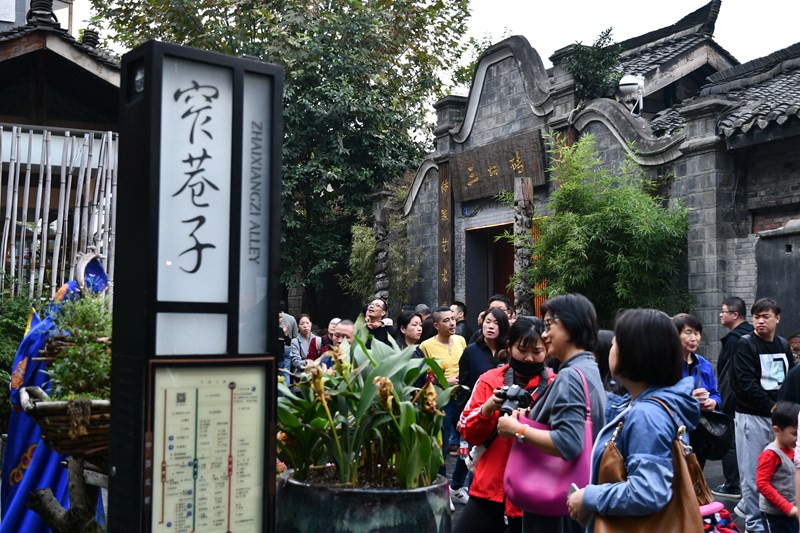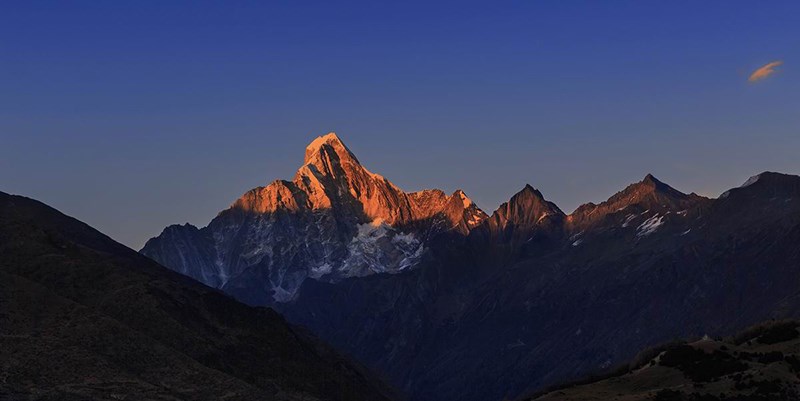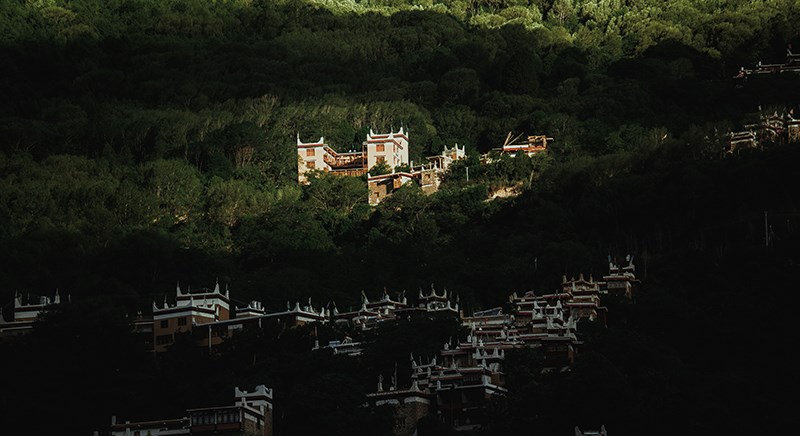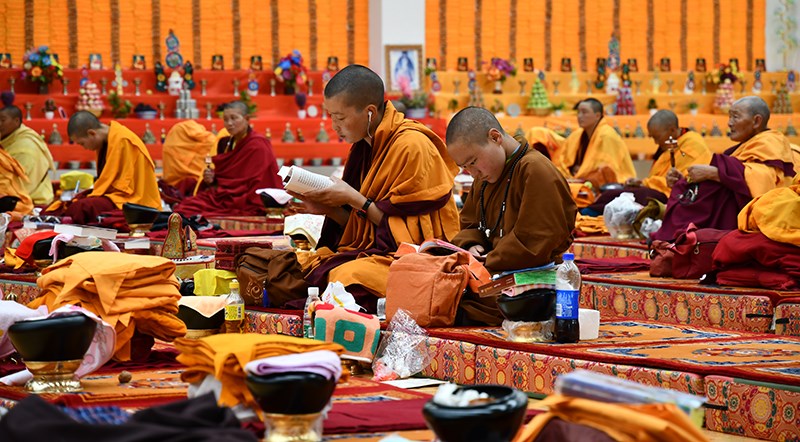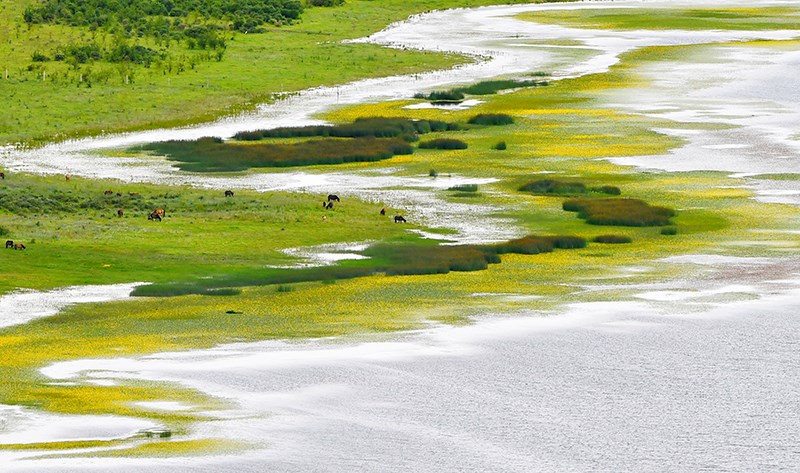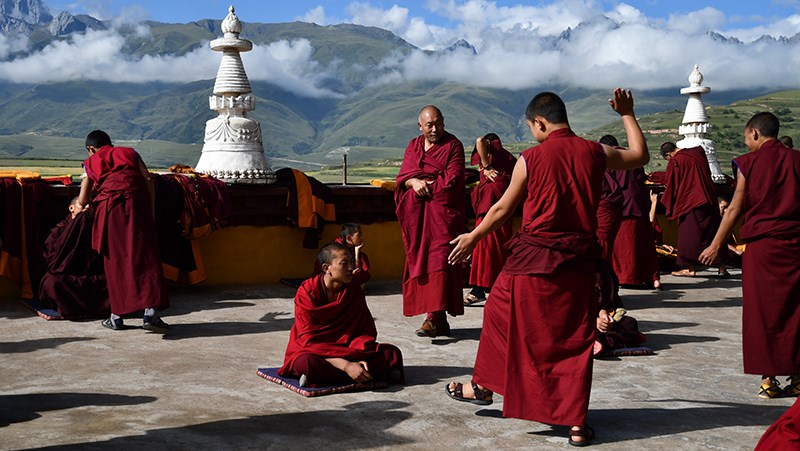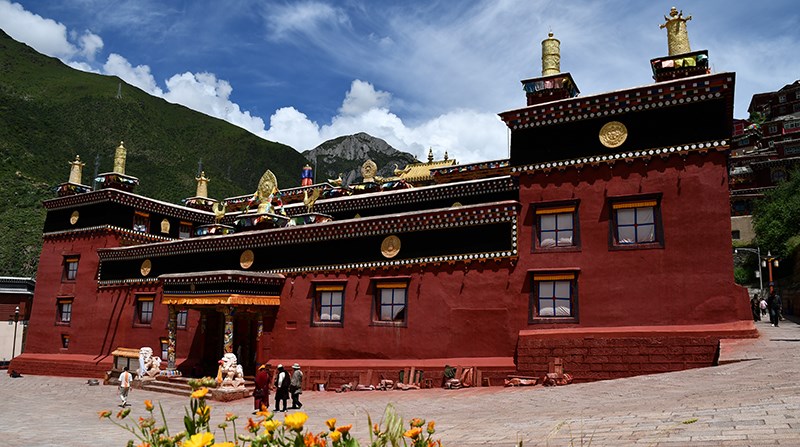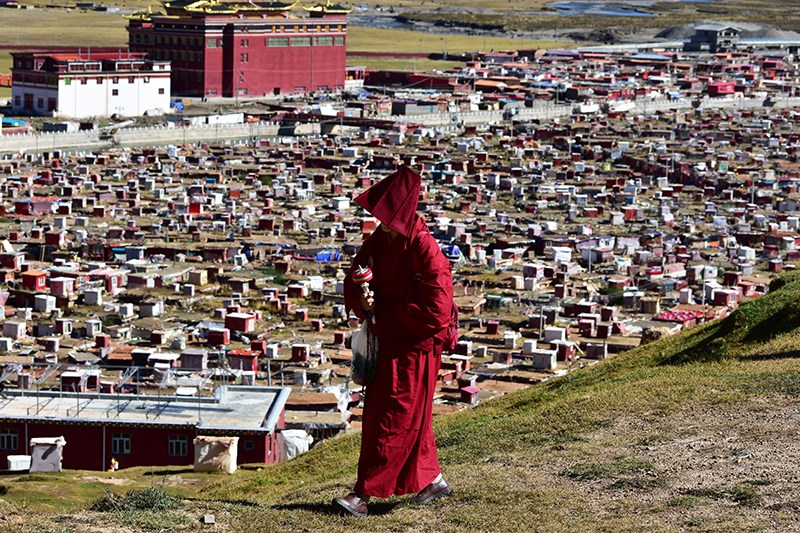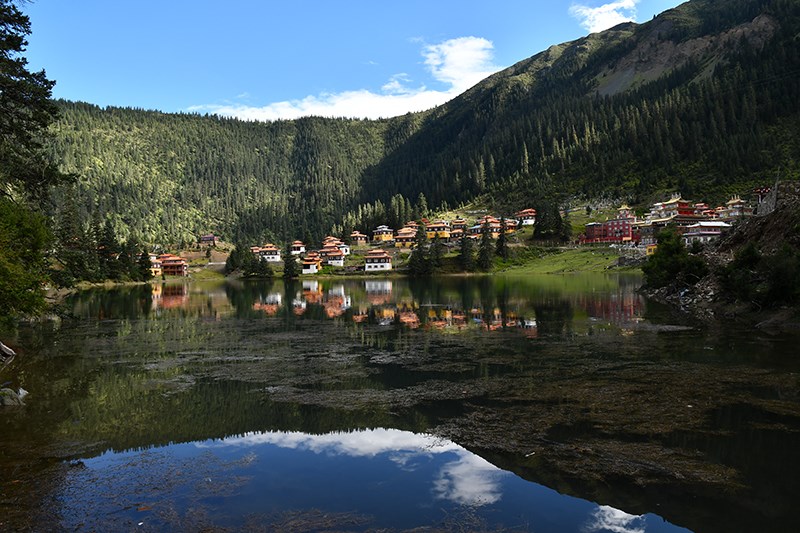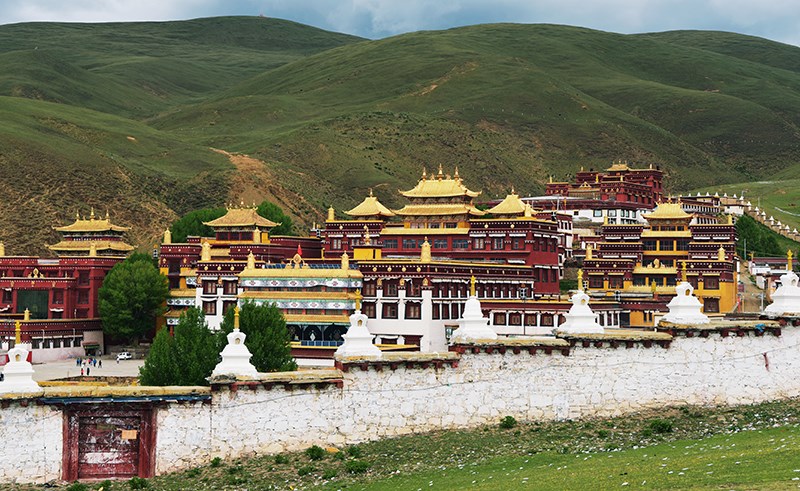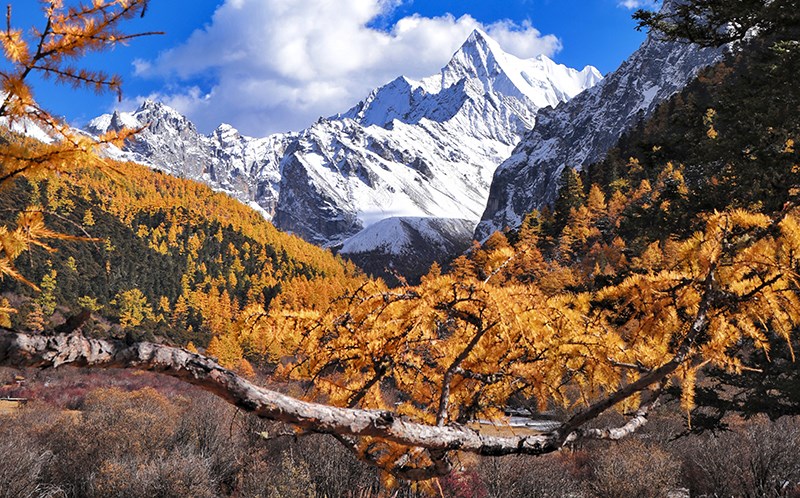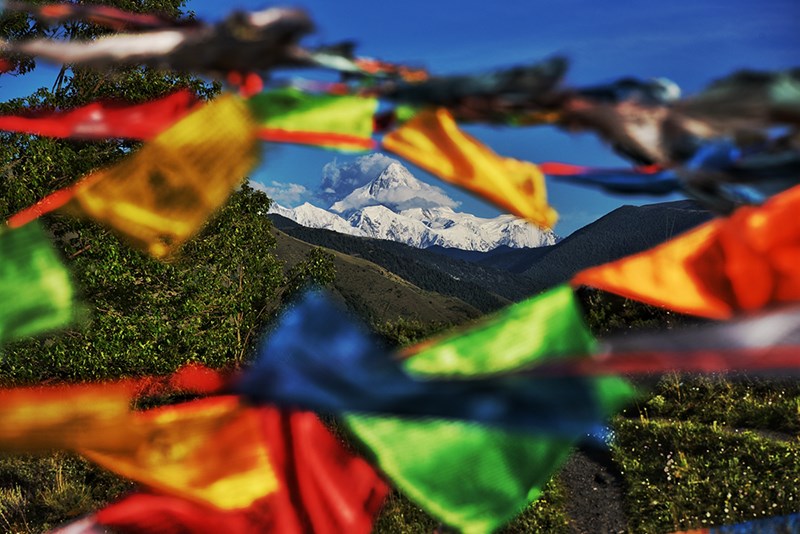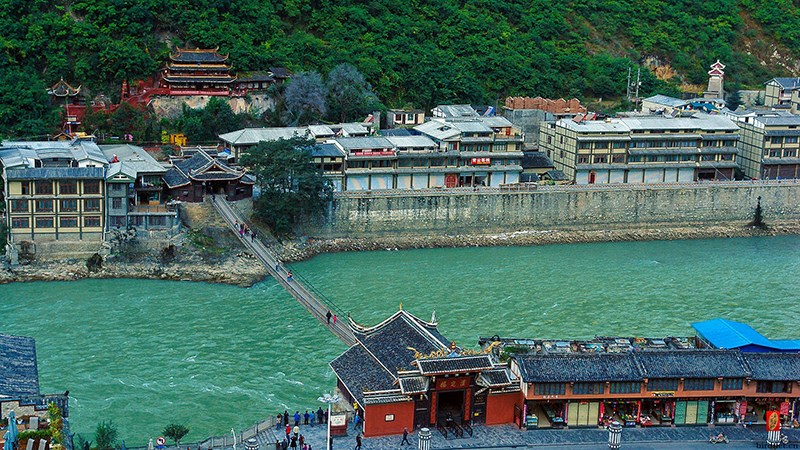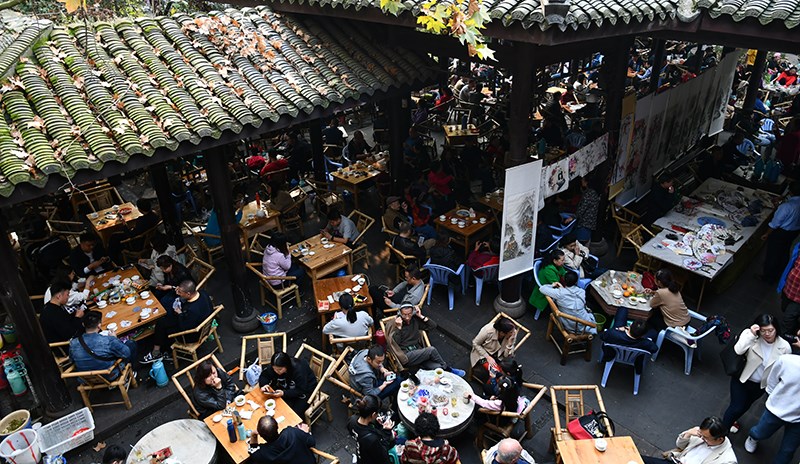14 Days Private Tour Chengdu – Wolong – Siguniang Shan – Danba – Tagong – Luhuo - Garze - Manigango - Yilhun Lhatso – Dege – Maisu - Pelyul - Yarchen Gar – Xinlong - Litang - Xiangcheng - Daocheng Yading - Xinduqiao - Kangding - Luding - Chengdu
Garze (Ganzi) Tibetan Autonomous Prefecture, the Kham in West Sichuan, gathers all natural and cultural elements of the Qinghai-Tibet Plateau, and it boasts own uniqueness: Dege Sutra Printing House – the head of three great Tibetan culture centers, Legend of King Gesar – the longest heroic epic in the world, brilliant prayer ceremonies in monastery and folk festivals, and it’s a paradise for birds and wild animals...
On this tour, we will go to Tibetan area Kham. We departure from Chengdu to Dege along the G317 National Highway. On the way, we will visit Wolong Panda Reserve, Siguniang Mountain, Zhonglu Tibetan Village in Danba, Tagong Grassland with Tagong Monastery, Hepingfahui, Yala Holy Mountain, “Photo Gallery” of Highland Barley in Garze, Garze Monastery, Dargye Monastery, Yilhun Lhatso (Xinlu Hai Lake), and Dege Sutra Printing House - the head of the three major Tibetan cultural centers. Afterwards, we go to Maisu Village along Jingsha River (the upstream of Yangtze River). Have you ever heard of a place called Maisu? It is the "hometown of traditional Tibetan handicrafts in China" publicized by the official institutions, but rarely known by people. And the famous Dzongsar Monastery and Dzongsar Tibetan Hospital are located here. Continue to Baiyu to visit the magnificent Pelyul Monastery (Baiyu Si) of Nyingma Sect. The most attracting highlight is the Yarchen Gar that is the largest place for female meditation practice and where we can feel the pure religious atmosphere. After that, we drive to the hidden Tsoka Lake and Tsoka Monastery. And then we pass by Litang - the "world highland city" and the culture center of Kham, go to Xiangcheng to explore the mysterious Qingde Village and the beautiful Tibetan white houses. The next highlight is Yading, Daocheng. In Yading we walk among snowy mountains, holy lakes and alpine valleys. On the way back to Chengdu, we will go through Xinduqiao and climb onto the observation platform to overlook the main peak of Gongga Mountain (Minya Konka, 7556 m). Finally, we visit Luding Iron Chain Bridge where the Chinese Red Army combated during the Long March.
Private travel, great experiences! Please contact us for your tailor-made travel offer.
With individual China Tibet travel, you can decide when, where and how you go on tour by yourself. What's more, you can choose the length of travel and whom you go with.
Hotel, program and itinerary are subjected to change with prior notice.
We must point out that you counter a basic tourism infrastructure in this region. Long journeys on bad roads and on high altitude and delays require good physical fitness, resilience and flexibility of the participants. Program and route changes due to unforeseen events are expressly reserved. If you desire the unknown and have an understanding of contingency, this is the right trip for you.
Panda in Wolong | Photo by Liu Bin
Jiaju Village in Danba | Photo by Liu Bin
Tagong Monastery | Photo by Liu Bin
Tagong Monastery | Photo by Liu Bin
Grand Stone Mani Wall in Tagong | Photo by Liu Bin
Gyergo Nunnery in Tagong | Photo by Liu Bin
Sunset of Yala Mountain | Photo by Liu Bin
Han-Chinese Monastery in Ganzi | Photo by Liu Bin
Ganzi Monastery | Photo by Liu Bin
Debate in Ganzi Monastery | Photo by Liu Bin
Old Tibetan near Ganzi | Photo by Liu Bin
Dargye Monastery | Photo by Liu Bin
Dargye Monastery | Photo by Liu Bin
Dege Printing House | Photo by Liu Bin
Dege Printing House | Photo by Liu Bin
Dege Printing House | Photo by Liu Bin
Dege Printing House | Photo by Liu Bin
Dege Printing House | Photo by Liu Bin
Dege Printing House | Photo by Dr. Ningmei Chen
Pelyul Monastery (Baiyu Si) | Photo by Liu Bin
A Reading Nun at Yarchen Gar | Photo by Liu Bin
Yarchen Gar | Photo by Liu Bin
Yarchen Gar | Photo by Liu Bin
Tsoka Monastery and Tsoka Lake | Photo by Liu Bin
Tsoka Monastery and Tsoka Lake | Photo by Liu Bin
Tsoka Monastery | Photo by Liu Bin
Tsoka Monastery | Photo by Liu Bin
Litang Monastery | Photo by Liu Bin
Yangmaiyong Mountain in Yading | Photo by Liu Bin
